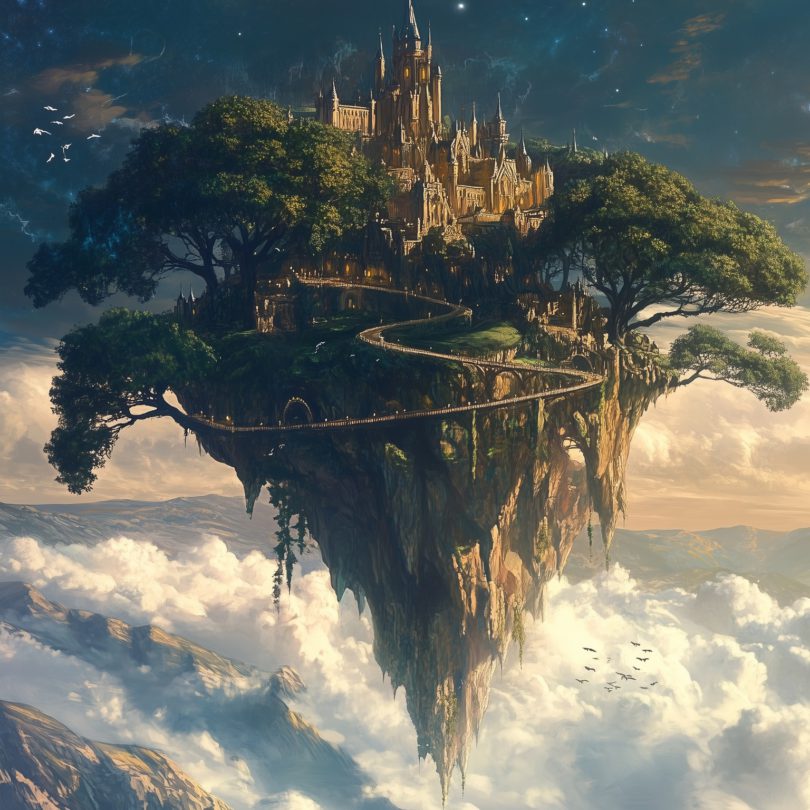World-building is the creative backbone of fantasy and science fiction, elevating what could be little more than words on a page into an immersive experience. Great writers work wonders through careful techniques that forge settings into near tangible items: from Tolkien’s lush Middle-earth to J.K. Rowling’s wizarding world, and Ursula K. Le Guin’s complex interplanetary societies. These worlds aren’t passive backgrounds for the story; they’re active characters, deeply influencing the plot, its characters, and the readers. But what is it about these worlds that makes them so beguiling? This article looks at some of the techniques of world-building, and how famous authors employ them to drag readers into unforgettable worlds.
History and Mythology as a Means of Creating Depth
J.R.R. Tolkien-the great author of The Lord of the Rings-is a master in elaboration of deep histories and voluminous mythologies. Before he began his novels, he worked out complex languages, ancestral lore, and a timeline stretching over thousands of years. Middle-earth is a place one really believes in because it has such a rich past filled with tales of wars, kingdoms, and legendary figures. This sense of history informs the text, often allowing glimpses of a world that existed long before the main story began.
Practice by Tolkien reveals that there is a kernel of credibility that accompanies a well-elaborated mythology. Ancient ruins, forgotten languages, and the echoes of lost battles give readers the impression of being in contact with a world with its own time and memory. For writers building immersive worlds, one way to mirror the depth found in Tolkien’s Middle Earth is establishing the setting with a history, allowing it to come alive with both present and past.
Creation of Consistent and Elaborate Societies
Of course, the world-building through society and culture is perhaps best exemplified in Ursula K. Le Guin’s Earthsea series. Each island in Earthsea has its own etiquette, customs, traditions, and beliefs, languages, and social structures. An anthropologist herself, Le Guin gives weight to her societies, making them quite disparate from each other yet viable unto themselves in the world that is Earthsea. For example, in Earthsea, magic has a deep connection to language, as perhaps the central aspect of its world-building in terms of the true names at the core of its magic system.
With these variances of societal norms and values associated with each place, Le Guin truly makes this world one in which culture really seems real and diverse. In The Left Hand of Darkness, Le Guin plunges even deeper, into the aspects of gender fluidity within Gethenian society, testing the perceptions and expectations of readers. Her work shows how near a fantasy world can get to the complexity of our world by having elaborate societal structures based on some interesting ideas. Writers invent special customs, alien languages, and belief systems that influence daily life, immersing readers into such a culture.
Using Language as a Tool of Immersion
One of the most attractive forms of world-building is the treatment of language. The elaboration of Elvish, Dwarvish, and other Middle-earth languages is one factor that makes that world feel as real as possible; it can show, through ages, how different groups might develop their dialects. These languages are not mere decoration but tools with which to manufacture a believable world in possession of its linguistic identity. Tolkien was painstaking, drawing from real languages such as Finnish and Welsh to create something both familiar and exotic.
Similarly, language also acts as one of the major players in the world of wizards created by J.K. Rowling. The incantations in Harry Potter are etymologically linked to Latin, which makes the system of magic sound really ancient. Rowling also uses terms peculiar to her world-from “Muggle” to “Azkaban.” These terms give readers new words to learn, drawing them deeper into the world. By building a linguistic foundation, Rowling and Tolkien enable the readers to make the logics of their worlds internal, based on their own sense of linguistic reality.
It enhances the degree of immersion when one creates special words, names of places, or even an entirely new language. Language should feel organic to the world and be reflective of its cultures, adding layers to make the setting feel fully developed.
Incorporating Geography and Environment
Setting the tone and atmosphere of any story, geography, and environment are important. In The Lord of the Rings, Middle-earth’s geography will range in scope from the serene Shire to the forsaken Mordor. Each location is different in its own particular way, having features that reflect the character and history of the races that call home. For example, the dense forests of Lothlórien reflect the ageless grace and insight of the Elves, while the barren landscapes of Mordor reflect the evil of Sauron. By using the physical landscape as a reflection of the emotional and cultural tone, Tolkien can create a setting that feels real but at once is symbolic.
Similarly, in Harry Potter, Hogwarts constitutes one of the central features of this world of wizards. The author allows the castle to become a character, complete with its hidden rooms, shifting staircases, and magical atmosphere, all combining to further the mood of the story. The physical space of Hogwarts is ever-changing, so that it becomes as dynamic as the characters themselves. The use by Rowling of a focal point-a place with constant revelations-k Hickman 24.
It helps authors to create an environment that is as alive as the characters in a story by using detailed maps, diverse ecosystems, and geography that represents thematic elements.
Establish Rules of Magic and Science
What makes fantasy and science fiction such a pleasure for most readers has something to do with either magic or advanced technology. These elements need to be grounded in rules so that they could be believable. In Earthsea, Le Guin’s mode of magic consists of knowing the “truenames” of things and thus draws on thinking that language and identity are inextricably intertwined. The magic in Earthsea follows an equilibrating principle: every increase in power would bring corresponding responsibilities and aftereffects. By establishing the things that magic can and cannot do, Le Guin reveals a more realistic system better in tune with how the natural world works.
While in Harry Potter, magic is harnessed through education and training by Rowling: one needs to learn the formulas, and complex magic demands skill and focus-in certain instances, it also requires special tools. The structured approach makes the magic more of a discipline rather than an arbitrary superpower; it adds some weight to the character arcs as the characters study and perfect their talents.
Clear rules and limitations can help authors make their worlds more believable. Writers based fantastical elements upon rules in order to introduce systems which are logical in nature and this will entertain the readers with the details related to the created world.
Internal Consistency and Logical Flow
A world becomes believable when it follows its own internal logic. When characters in a fantasy world can break rules set within that world willy-nilly, or magical elements crop up and are used as needed, a reader might grow disengaged. Tolkien’s Middle-earth is consistent down to character dialects and limitations on magical abilities. Rowling keeps her world logically consistent; while having whimsical elements, there are limits both the characters and readers know, such as the taboo absoluteness of using Unforgivable Curses.
For Le Guin, the key is in consistency of character behavior and of cultural expectancy. She gives credence to worlds that are in their own right by making societies in which characters follow their cultures and settings appropriately.
Authors can achieve consistency in their works by developing “rules” about their world early in creation, checking how each new element fits into the world’s structure, and keeping in mind that even the most improbable of worlds work best when they’re true to their own logic.

